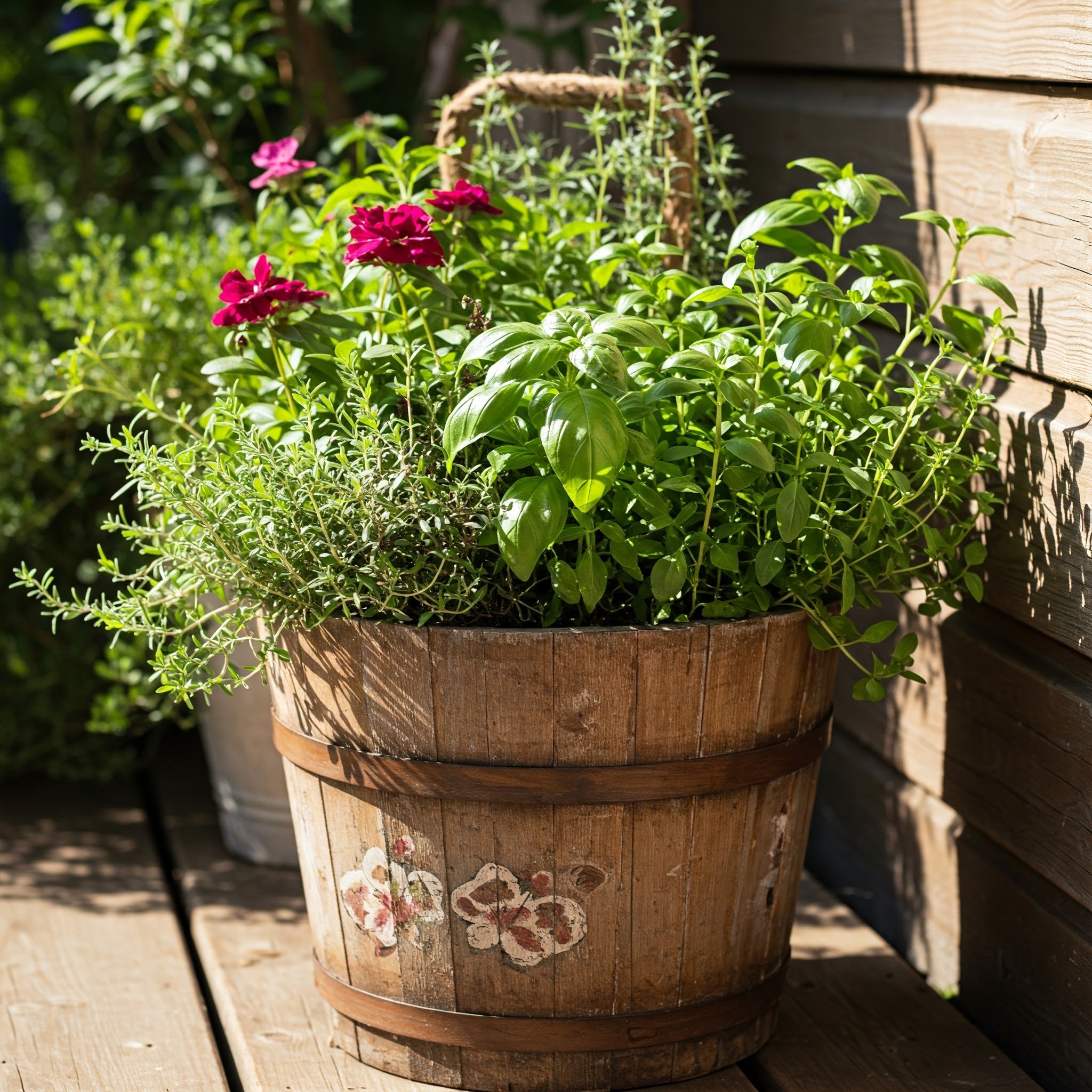Vole vs Mouse: Identification and Behavior
Not sure if you’re dealing with voles or mice in your yard or home? Learn the key differences in vole vs mouse: identification and behavior to keep your space pest-free!
If you’ve noticed small rodents scurrying around your yard, or perhaps even sneaking into your home, you’re probably wondering: vole or mouse? They may look similar at first glance, but voles and mice are quite different in terms of their appearance, behavior, and habits. Being able to tell them apart is crucial for effective pest control. In this article, we’ll break down vole vs mouse: identification and behavior so you can confidently spot the difference and take appropriate action. Whether you’re trying to protect your garden from being destroyed or simply keep your house rodent-free, understanding the unique characteristics of voles and mice will help you manage the situation more effectively.
Vole vs Mouse: Physical Identification
While both voles and mice are small, furry critters, there are some distinct physical differences between the two. Knowing how to identify them by sight is the first step in determining what kind of rodent you’re dealing with.
1. Appearance
Vole: Voles, often referred to as “meadow mice,” have stocky, compact bodies. Their faces are rounder, and their eyes are smaller compared to mice. They have short tails, about 1-2 inches long, and their ears are less prominent, sometimes barely visible through their fur. Voles have a somewhat blunt nose, giving them a slightly "squished" appearance.
Mouse: Mice, on the other hand, have slender bodies with longer tails—often as long as or longer than their bodies. Their ears are larger and more noticeable, and they have pointy noses. Mice also tend to have bigger, more prominent eyes compared to voles, giving them a more alert appearance.
2. Size
Vole: Voles are generally a bit bigger and chunkier than mice, ranging from 4 to 8 inches in length, including their short tails.
Mouse: Mice are smaller, with bodies usually around 2 to 4 inches long, not including their long tails.
3. Fur Color
Vole: Voles typically have dark brown or grayish fur, which helps them blend into grassy or wooded environments.
Mouse: Mice can vary in color, but they’re usually light brown, gray, or white with lighter underbellies.
By looking at these key physical traits, you can start to distinguish between voles and mice. But appearances aren’t everything—let’s dive into how their behaviors can also clue you in.
Vole vs Mouse: Behavior and Habitat
Physical differences aside, vole vs mouse: identification and behavior can often be confirmed by observing where and how these critters behave in your yard or home.
1. Habitat Preferences
Vole: Voles are outdoor animals and are commonly found in gardens, meadows, or grassy fields. They love moist environments with dense ground cover where they can burrow easily. Voles are known for creating extensive underground tunnel systems, and their presence is often revealed by the appearance of small holes in the ground or visible runways in the grass. Voles rarely venture indoors, but if they do, it’s usually due to extreme weather conditions.
Mouse: Mice, on the other hand, are more opportunistic. They’re happy both indoors and outdoors, often seeking shelter inside homes, garages, or barns when the weather gets cold. Indoors, they tend to stick close to food sources like pantries and kitchens. Mice are climbers, so they can access higher areas, while voles prefer staying close to the ground.
2. Diet
Vole: Voles are herbivores, which means they feed primarily on plant matter. Their diet consists of grass, seeds, roots, and bulbs, making them notorious pests in gardens and farmlands. They can cause significant damage to plants and trees by gnawing on the roots or trunks, particularly during the winter months when food is scarce.
Mouse: Mice are omnivores, meaning they’ll eat just about anything. In the wild, they’ll eat seeds, grains, insects, and small fruits. Indoors, they’ll happily feast on crumbs, pet food, and anything else they can find in your pantry. This omnivorous diet is one reason mice are so successful at adapting to a variety of environments.
3. Social Behavior
Vole: Voles are more solitary animals. They tend to live alone or in small family units within their burrow systems. While they may share their tunnels with a mate or offspring, voles are not as socially active as mice.
Mouse: Mice, on the other hand, are highly social creatures. They often live in colonies, and if you spot one mouse, it’s likely there are more nearby. Mice breed rapidly, which is why infestations can quickly get out of control if not addressed early.
4. Reproduction
Vole: Voles have a high reproduction rate, with females giving birth to multiple litters a year, each consisting of about 5 to 10 pups. While they’re prolific breeders, their population levels can fluctuate depending on food availability and environmental conditions.
Mouse: Mice are also fast breeders, with females capable of producing up to 10 litters a year, each with 6 to 12 babies. Once inside your home, mice can quickly establish a large population if they find a consistent food source.
Signs of Voles vs Mice: What to Look For
Now that you’ve learned how to identify these critters by appearance and behavior, let’s talk about how to spot the signs of vole vs mouse: identification and behavior in your yard or home.
1. Yard Damage
Vole: If you’re dealing with voles, you’ll likely notice damage to your lawn or garden. Voles create shallow tunnels just beneath the surface, which can make your yard look uneven or “bumpy.” They also leave behind small holes in the ground and chew marks on plants or trees near the base.
Mouse: Mice don’t typically cause visible damage outdoors, but they can invade sheds, garages, or other outbuildings. Inside your home, mice can chew through wires, insulation, and even drywall, which can cause structural and electrical problems.
2. Droppings
Vole: Vole droppings are small, round, and usually dark in color. They’re typically found near their burrow entrances or in grassy areas where they’ve been feeding.
Mouse: Mouse droppings are slightly larger than vole droppings, about the size of a grain of rice, and are often scattered in areas where mice have been feeding or nesting, such as inside cabinets or along walls.
3. Sounds
Vole: Because voles are more solitary and stay underground, you’re unlikely to hear much noise from them unless they’ve found their way indoors, which is rare.
Mouse: Mice, on the other hand, are notorious for making noise, especially at night. You might hear scratching, scurrying, or gnawing sounds coming from walls, ceilings, or floorboards.
How to Deal with Voles and Mice
Whether you’ve identified a vole problem or a mouse infestation, the next step is taking action. Here’s how to manage each type of rodent.
1. Dealing with Voles
Remove Ground Cover: Since voles prefer dense vegetation, keeping your yard well-trimmed and free of debris can discourage them from burrowing.
Wire Barriers: Installing wire mesh around the base of trees or vulnerable plants can prevent voles from gnawing on them.
Trapping: Vole traps, similar to mouse traps, can be used to control small vole populations in your yard.
2. Dealing with Mice
Seal Entry Points: Mice can squeeze through tiny gaps, so inspect your home’s foundation, windows, and doors for any cracks or holes and seal them up.
Remove Food Sources: Store food in airtight containers and clean up crumbs to make your home less appealing to mice.
Traps: Standard mouse traps or humane traps can help reduce the mouse population in your home. If you have a larger infestation, you might need professional help.
Conclusion
When it comes to vole vs mouse: identification and behavior, knowing the differences can save you a lot of time and effort. Voles and mice may look similar at a glance, but their habits, habitats, and the type of damage they cause are quite distinct. Whether you’re protecting your garden from voracious voles or trying to keep sneaky mice out of your kitchen, understanding these rodents is the first step in controlling them. Armed with this guide, you’re ready to tackle whatever furry foe comes your way!
Frequently Asked Questions
1. Can voles get inside my house like mice?
It’s rare, but voles can enter homes, especially during extreme weather conditions. However, they typically prefer to stay outdoors in grassy or wooded areas.
2. What’s the fastest way to get rid of voles in my yard?
Traps and barriers are effective, but reducing ground cover and keeping your lawn well-maintained is a long-term solution for preventing voles.
3. Do voles and mice carry the same diseases?
Both voles and mice can carry diseases, but mice are more likely to spread them inside your home due to their tendency to invade living spaces.
4. Can I use the same traps for voles and mice?
Yes, the same type of traps can generally be used for both voles and mice, though placement is key—vole traps should be set near burrow entrances or runways, while mouse traps should be placed indoors along walls or in dark corners.
5. How do I know if I have a vole infestation?
Look for signs of lawn damage, visible tunnels, and chewed-up plants. If you notice any of these, you’re likely dealing with voles.
Stay up to date with our latest ideas!































